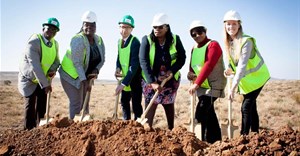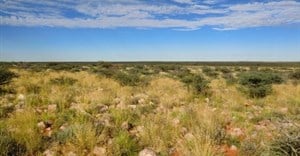Subscribe & Follow
Trending
Jobs
- Administration Lead Remote
- Development Lead South Africa
Increase in solar energy will contribute to green environment

The draft IRP revision proposes that the PV allocation be increased by 1,330MW, while CSP allocation, which to date has only been given a low MW capacity, be increased by a substantial 2,100MW. The increased solar energy allocation, would of course contribute to alleviating the country's inconsistent, unreliable power supply. However, as importantly, the proposed revisions would help decrease the country's carbon emissions.
"A marked increase in solar renewable energy allocation would help reduce carbon emissions in a country which has one of the highest carbon emissions worldwide, and in so doing contribute to a much needed green environment. This would be a particularly positive spin-off and of tremendous benefit to South Africa," says Bradley Hemphill, managing director of EES, a professional engineering and management company. EES has played a significant role in the implementation of solar renewable energy in the Northern Cape to date.
Compiling final draft
The sun-drenched Northern Cape has some of the best direct normal irradiance (DNI) ratings in the world. It is the location of the Department of Energy's proposed 5GW solar corridor, which is targeted for completion in 2022. The closing date for comments on the draft from renewable energy industry players was 7 February 2014. The comments received are currently being used to compile a final draft to be submitted to Cabinet this month. Following Cabinet endorsement, the approved document will be promulgated.
The draft IRP revision is an initiative of the Department of Energy's Renewable Energy Independent Power Producers Procurement Programme (REIPPPP). The REIPPPP, which has been underway since 2010 and has made significant strides in renewable energy, is part of South Africa's national strategy to introduce up to 17,800MW of renewable energy by 2030. With the addition of the 17 projects in the third bidding round, South Africa now has 64 approved REIPPPP projects with a collective capacity of 3,933MW.
International commitments
Carbon emission is a problem with regard to the country's traditional coal-fired power, which currently supplies most of the country's energy. Solar renewable energy emits no carbon. "South Africa has made a number of international commitments to reduce its carbon emissions. For example, under the agreement in the 2009 Copenhagen Accord, the country committed to reducing its green house gas emissions to 34% below its 'business-as-usual' growth trajectory by 2020. It is also committed to achieving the millennium development goals, which target environmental sustainability," explains James Ricketts, project manager for EES.
In South Africa the mandate for a green economy derives from the country's constitution and the country has a number of policies in place to implement the green economy. The National Development Plan (NDP), for example, is very specific about goals and a key focus is on energy and carbon, because greenhouse emissions are expected to peak in 2025.
"The National Planning Committee presented the NDP to South Africa in November 2011. The NDP's main focus was reportedly reducing the country's carbon emissions to a sustainable level by adopting adaptation and mitigation policies," Ricketts concludes.
















